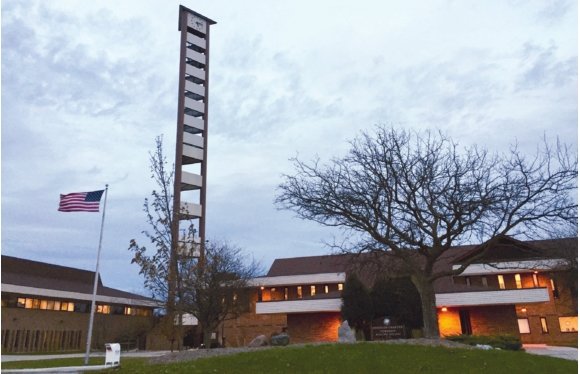
(Clarification: This story indicates Meridian Township Clerk Brett Dreyfus opposed the master plan because it would favor commercial developers. He said while that remains accurate, his opposition was based primarily on his belief the plan did not offer a clear vision for the future of development in the township.)
The process outlasted the terms of four board members and 17 planning commissioners, but Meridian Township has finally ratified its new master plan.
“It establishes a vision,” said the township’s senior planner, Peter Menser. “Right now we don’t really have downtown centers. This plan envisions a future where we do.”
The township board’s Nov. 21 meeting saw a 6-1 vote for approval, with Township Clerk Brett Dreyfus dissenting.
Dreyfus voted no believing there was too strong of an outsider influence from Northville’s McKenna Associates, a contractor that helped draft the plan.
So why is it a big deal for the township?
A municipality’s master plan dictates how developers can create new developments and where.
“It’s the fundamental document that the township uses to direct development,” said Meridian Township’s liaison for inter-neighborhood cooperation, Neil Bowlby. “It’s an important document for what the township will look like in the future.”
Menser said the biggest changes to come from the new plan are the Future Land Use Map, Urban Services Boundary and the three Potential Intensity Change Areas, or PICAs.
PICAs are the reimagining of an area to develop higher population density by way of introducing mixed-use developments, such as multi-storied businesses that double as apartments.
Meridian Township’s three PICAs are Carriage Hills on the northwest corner of Hagadorn and Lake Lansing roads; Okemos’ Four Corners, also known as Downtown Okemos, south of Grand River Avenue; and Haslett at the intersection of Haslett and Marsh roads. All three are being shopped to developers as prime locations for town center style shopping destinations.
The new Urban Services Boundary designates which zones will be accommodated with public facilities such as water and sewage. Areas outside of the boundary, which compose Meridian’s eastern rural third, will not be provided these services by the township. The lone exception is the Georgetown subdivision.
Back in 2009 the township declared the subdivision a “payback district.” In exchange for bringing the development to Meridian Township, the township reimburses Georgetown’s sewage costs and exempts its properties from the boundary.
Language within the master plan also provides opportunities for other developments to be exempt from the Urban Services Boundary. If developers or private property owners make compelling enough cases to the township board, they will have the go-ahead for their projects.
The Future Land Use Map lays out how many housing units per acre will be permitted in the township’s four residential zones. It also reiterates the PICA strategy, referring to the three PICAs as a ”regional void.” The residential zones that were given a bump in units allowed could see previously restricted developments take place in the future.
State law requires Meridian Township to revise its master plan every five years, but disputes between the board and planning commission halted the process to a slow trudge that required hiring outside consultant McKenna Associates in 2016 to the tune of $50,000.
Dreyfus complains that much of the work and visioning was handled by McKenna Associates and the board’s input was comparably miniscule.
“Only the commercial developers win and to say there was strong input from the community is a lie,” said Dreyfus.
Menser disputed that characterization. “Municipalities will often hire an outside consultant to just kind of coordinate a master plan,” Menser said. “That’s everything from getting and putting data together to writing the actual document. It’s help with overall coordination and production of the plan.”
Dreyfus’ criticism stems from caveats included with the plan’s three PICAs, a concept introduced to the plan by McKenna Associates. In order to increase density, restrictions in the three areas have been loosened for potential commercial developers.
Economic Development Director Chris Buck explained the relaxed regulations in our previous article about the Four Corners as the township allowing things they’ve never allowed before. The possibility of more apartments was not popular according to a comprehensive 2016 community survey paid for by the township, which found that 89 percent of township citizens were opposed to introducing more apartment complexes.
Menser said the new master plan does not give developers leeway to suddenly sprout up apartment buildings, but each neighborhood is ripe for more housing.
Of the three PICAs, Carriage Hills is listed by the plan as having potential for 131 additional housing units, Downtown Okemos’ potential is stated to be 695 additional units and Haslett was designated 320.
Like its neighbor East Lansing, the township aims to become vibrant by stepping away from the shopping centers with large parking lots in front. “It’s going to be a challenge, we are a community with a million square foot mall and dirt roads,” said Menser. “We want to see more people living in places like Downtown Okemos.”
Support City Pulse - Donate Today!
Comments
No comments on this item Please log in to comment by clicking here